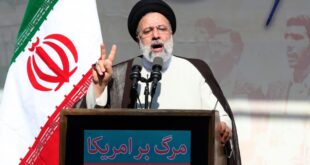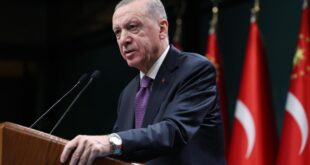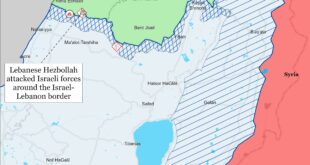
Terror group continues to seek opportunities to strike in west, says security council report
Islamic State has begun to reassert itself in its heartlands in the Middle East and continues to seek opportunities to strike in the west, the United Nations has said.
A report to the UN security council based on recent intelligence from member states describes how the group is mounting increasingly bold insurgent attacks in Iraq and Syria, calling and planning for the breakout of its fighters from detention facilities and exploiting the weaknesses of local security forces.
The report portrays an organisation that has suffered significant setbacks but is tenacious, well-funded and still poses a considerable local and international threat.
Though Donald Trump said Isis had been “largely defeated”, the claim has been repeatedly questioned by analysts, allies and some senior US officials. A Pentagon report warned of a resurgence in August, before the killing by US special forces of Abu Bakr al-Baghdadi, the self-declared caliph and former leader of Isis, in October.
Isis founding member confirmed by spies as group’s new leader
Read more
The new leader of Isis is believed to be Amir Mohammed Abdul Rahman al-Mawli al-Salbi, who is also known as Abu Ibrahim al-Hashimi al-Quraishi. He is one of the group’s founding members and led the enslavement of Iraq’s Yazidi minority and oversaw operations around the globe.
The UN report says the general strategic direction of Isis is unlikely to change but the new leader’s Turkmen ethnicity suggests he may be only a temporary choice until the group finds a more legitimate “emir”, potentially a direct descendant from the Quraysh Hashemite tribe who could command the full support of more remote “provinces” or affiliates of the group.
One challenge for Isis will be to rally supporters behind the new leader if security concerns prevent any direct communication.
The group does not lack funds, the report says. In Iraq it continues to finance its operations by investing in legitimate businesses and commercial fronts, and in Syria it has resumed extortion operations during daylight hours. Such efforts raise sufficient resources to cover the group’s running costs and allow pensions to be paid to widows or orphans of dead fighters.
The issue of foreign fighters remains acute, the UN notes, with between half and two-thirds of the more than 40,000 who joined the “caliphate” from overseas still alive.
There are grave concerns about detention centres and camps in Syria set up to house members of the group and their families who fled its last redoubts. Al-Hol camp, controlled by Syrian Kurdish forces, contains more than 70,000 people living in appalling conditions.
“The current improvised holding arrangements are a recipe for radicalisation and despair, especially in the case of minors … Repatriation of these people to their states of origin and/or nationality will be challenging in the short term but holds out the greatest hope of mitigating the longer-term threat,” the report says.
Many analysts predicted Isis would return to a low-level insurgency after losing the vast territory of its so-called caliphate in 2017, and would frame its heavy defeat as a temporary setback.
Last year Isis suffered further setbacks in Afghanistan, where thousands of its fighters have been killed by the Taliban, and Libya, where only a couple of hundred of loyal militants remain.
The group remains too weak to pose a significant direct threat to Europe, where it remains reliant on attacks by “homegrown terrorists”. These tend to be unreliable and relatively low-impact, the report says.
 Eurasia Press & News
Eurasia Press & News



